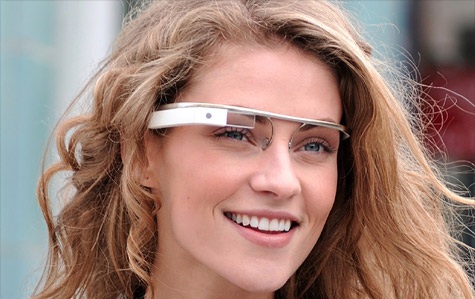First Ever Apps For Google Glass Shown At SXSW

New York Times, Evernote, and Path show off apps for hi-tech glasses
The New York Times, Evernote, and Path have become the first companies to produce working apps designed specifically for the Google Glass project. The software was presented by Timothy Jordan, Google’s senior developer advocate, at the South by Southwest (SXSW) festival in Texas.
During the presentation, Jordan told the audience that developers should treat glass as a completely new platform, before showing some previously unseen features of the high-tech spectacles.
A new breed
Google Glass runs Android, features indirect bone-conduction speakers, comes in five colours (black, grey, blue, red or white) and includes removable shades.
 To activate the device, users need to use the code phrase “OK Glass”, followed by one of pre-set commands. Besides voice control, the headset can also be operated through a small touchpad on the side accompanied by a single button, or by eye movement.
To activate the device, users need to use the code phrase “OK Glass”, followed by one of pre-set commands. Besides voice control, the headset can also be operated through a small touchpad on the side accompanied by a single button, or by eye movement.
The known functions of the headset include voice-to-text messaging, video calls, access to Google’s search engine, email, translation, GPS navigation and calendar. Google Glass is able to take pictures, film video and share content on social networks. At the moment, only compatibility with Google+ has been confirmed.
From Monday, the device is also able to display a New York Times news feed, annotate images through Evernote’s Skitch app, and share them with user’s contacts in Path. The developers interact with Glass through the Google Glass Mirror API, which enables the single-screen ‘timeline cards’ that can include include text, images, rich HTML and video.
Jordan warned developers against porting existing apps to Glass, asking them to create new software for the new form-factor and to avoid unnecessary pop-up updates, reports The New York Times.
Google has recently made 8,000 units of Glass available to the public through the Glass Explorer initiative. In order to become happy owners of the über-spectacles, participants were required to express in 50 words why they should be chosen to test drive the device. The mini-essay had to be accompanied by a 15-second video and five photographs taken by the applicant. Even if the application was successful, the user also had to shell out around $1,500 for the device itself.
Meanwhile, Microsoft has put in a patent application that indicates it is working on a set of high-tech shades of its own.
Are you an expert on Google? Take our quiz!